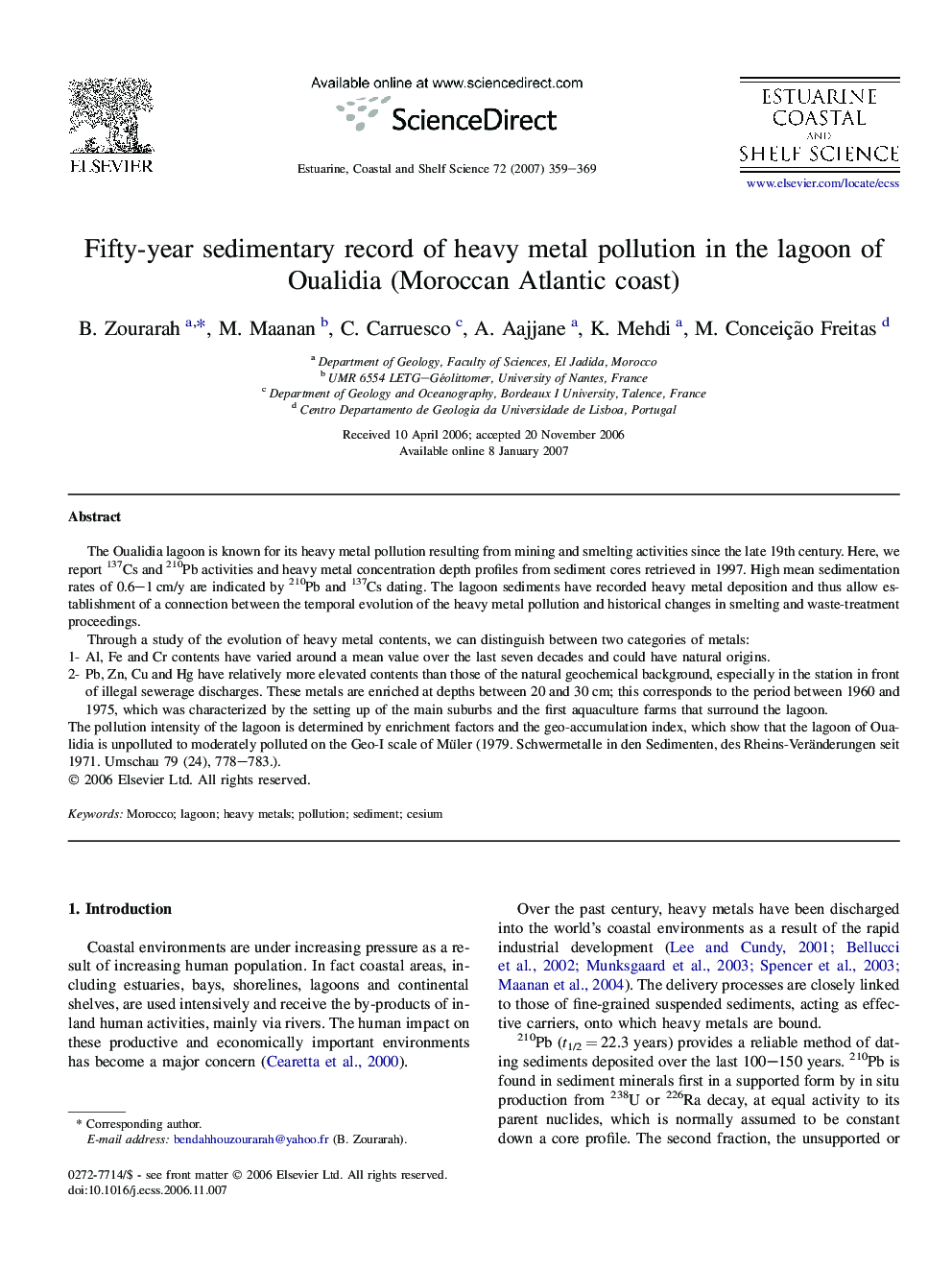| Article ID | Journal | Published Year | Pages | File Type |
|---|---|---|---|---|
| 4542020 | Estuarine, Coastal and Shelf Science | 2007 | 11 Pages |
The Oualidia lagoon is known for its heavy metal pollution resulting from mining and smelting activities since the late 19th century. Here, we report 137Cs and 210Pb activities and heavy metal concentration depth profiles from sediment cores retrieved in 1997. High mean sedimentation rates of 0.6–1 cm/y are indicated by 210Pb and 137Cs dating. The lagoon sediments have recorded heavy metal deposition and thus allow establishment of a connection between the temporal evolution of the heavy metal pollution and historical changes in smelting and waste-treatment proceedings.Through a study of the evolution of heavy metal contents, we can distinguish between two categories of metals:1-Al, Fe and Cr contents have varied around a mean value over the last seven decades and could have natural origins.2-Pb, Zn, Cu and Hg have relatively more elevated contents than those of the natural geochemical background, especially in the station in front of illegal sewerage discharges. These metals are enriched at depths between 20 and 30 cm; this corresponds to the period between 1960 and 1975, which was characterized by the setting up of the main suburbs and the first aquaculture farms that surround the lagoon.The pollution intensity of the lagoon is determined by enrichment factors and the geo-accumulation index, which show that the lagoon of Oualidia is unpolluted to moderately polluted on the Geo-I scale of Müler (1979. Schwermetalle in den Sedimenten, des Rheins-Veränderungen seit 1971. Umschau 79 (24), 778–783.).
